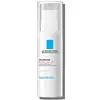What's inside
What's inside
 Key Ingredients
Key Ingredients

 Benefits
Benefits

 Concerns
Concerns

 Ingredients Side-by-side
Ingredients Side-by-side

Water
Skin ConditioningSqualane
EmollientGlycerin
HumectantButylene Glycol
HumectantPhenyl Trimethicone
Skin ConditioningAmmonium Acryloyldimethyltaurate/Vp Copolymer
Avena Sativa Kernel Extract
AbrasiveCucumis Sativus Fruit Extract
EmollientHordeum Vulgare Extract
EmollientSucrose Stearate
EmollientSea Whip Extract
Skin ConditioningCholesterol
EmollientHelianthus Annuus Seedcake
AbrasiveChamomilla Recutita Extract
Skin ConditioningAcetyl Glucosamine
Skin ConditioningLactobacillus Ferment
Skin ConditioningPPG-20 Methyl Glucose Ether
Skin ConditioningCaffeine
Skin ConditioningPropylene Glycol Dicaprate
EmollientCaprylyl Glycol
EmollientStearic Acid
CleansingSodium Chloride
MaskingDisodium EDTA
BHT
AntioxidantPhenoxyethanol
PreservativePolyaminopropyl Biguanide
PreservativeCI 19140
Cosmetic ColorantCI 61570
Cosmetic ColorantCI 42090
Cosmetic ColorantWater, Squalane, Glycerin, Butylene Glycol, Phenyl Trimethicone, Ammonium Acryloyldimethyltaurate/Vp Copolymer, Avena Sativa Kernel Extract, Cucumis Sativus Fruit Extract, Hordeum Vulgare Extract, Sucrose Stearate, Sea Whip Extract, Cholesterol, Helianthus Annuus Seedcake, Chamomilla Recutita Extract, Acetyl Glucosamine, Lactobacillus Ferment, PPG-20 Methyl Glucose Ether, Caffeine, Propylene Glycol Dicaprate, Caprylyl Glycol, Stearic Acid, Sodium Chloride, Disodium EDTA, BHT, Phenoxyethanol, Polyaminopropyl Biguanide, CI 19140, CI 61570, CI 42090
Water
Skin ConditioningGlycerin
HumectantIsostearyl Neopentanoate
EmollientButylene Glycol
HumectantBoron Nitride
AbsorbentButyrospermum Parkii Butter
Skin ConditioningCI 77891
Cosmetic ColorantPentylene Glycol
Skin ConditioningHydrogenated Coco-Glycerides
EmollientPolysorbate 20
EmulsifyingZea Mays Starch
AbsorbentSchisandra Sphenanthera Fruit Extract
AntioxidantTin Oxide
AbrasiveSorbitan Oleate
EmulsifyingGlyceryl Acrylate/Acrylic Acid Copolymer
HumectantGlyceryl Stearate Citrate
EmollientIsohexadecane
EmollientSphingomonas Ferment Extract
Skin ConditioningSilica
AbrasiveAluminum Hydroxide
EmollientMannitol
HumectantAmmonium Polyacryloyldimethyl Taurate
Emulsion StabilisingHydrogenated Lecithin
EmulsifyingCaprylyl Glycol
EmollientCitric Acid
BufferingTrisodium Ethylenediamine Disuccinate
Acetyl Dipeptide-1 Cetyl Ester
Skin ConditioningMaltodextrin
AbsorbentPolysorbate 80
EmulsifyingAcrylamide/Sodium Acryloyldimethyltaurate Copolymer
Emulsion StabilisingMica
Cosmetic ColorantCI 77288
Cosmetic ColorantCI 77491
Cosmetic ColorantCI 77492
Cosmetic ColorantCI 77499
Cosmetic ColorantWater, Glycerin, Isostearyl Neopentanoate, Butylene Glycol, Boron Nitride, Butyrospermum Parkii Butter, CI 77891, Pentylene Glycol, Hydrogenated Coco-Glycerides, Polysorbate 20, Zea Mays Starch, Schisandra Sphenanthera Fruit Extract, Tin Oxide, Sorbitan Oleate, Glyceryl Acrylate/Acrylic Acid Copolymer, Glyceryl Stearate Citrate, Isohexadecane, Sphingomonas Ferment Extract, Silica, Aluminum Hydroxide, Mannitol, Ammonium Polyacryloyldimethyl Taurate, Hydrogenated Lecithin, Caprylyl Glycol, Citric Acid, Trisodium Ethylenediamine Disuccinate, Acetyl Dipeptide-1 Cetyl Ester, Maltodextrin, Polysorbate 80, Acrylamide/Sodium Acryloyldimethyltaurate Copolymer, Mica, CI 77288, CI 77491, CI 77492, CI 77499
 Reviews
Reviews

Ingredients Explained
These ingredients are found in both products.
Ingredients higher up in an ingredient list are typically present in a larger amount.
Butylene Glycol (or BG) is used within cosmetic products for a few different reasons:
Overall, Butylene Glycol is a safe and well-rounded ingredient that works well with other ingredients.
Though this ingredient works well with most skin types, some people with sensitive skin may experience a reaction such as allergic rashes, closed comedones, or itchiness.
Learn more about Butylene GlycolCaprylyl Glycol is a humectant and emollient, meaning it attracts and preserves moisture.
It is a common ingredient in many products, especially those designed to hydrate skin. The primary benefits are retaining moisture, skin softening, and promoting a healthy skin barrier.
Though Caprylyl Glycol is an alcohol derived from fatty acids, it is not the kind that can dry out skin.
This ingredient is also used as a preservative to extend the life of products. It has slight antimicrobial properties.
Learn more about Caprylyl GlycolGlycerin is already naturally found in your skin. It helps moisturize and protect your skin.
A study from 2016 found glycerin to be more effective as a humectant than AHAs and hyaluronic acid.
As a humectant, it helps the skin stay hydrated by pulling moisture to your skin. The low molecular weight of glycerin allows it to pull moisture into the deeper layers of your skin.
Hydrated skin improves your skin barrier; Your skin barrier helps protect against irritants and bacteria.
Glycerin has also been found to have antimicrobial and antiviral properties. Due to these properties, glycerin is often used in wound and burn treatments.
In cosmetics, glycerin is usually derived from plants such as soybean or palm. However, it can also be sourced from animals, such as tallow or animal fat.
This ingredient is organic, colorless, odorless, and non-toxic.
Glycerin is the name for this ingredient in American English. British English uses Glycerol/Glycerine.
Learn more about GlycerinWater. It's the most common cosmetic ingredient of all. You'll usually see it at the top of ingredient lists, meaning that it makes up the largest part of the product.
So why is it so popular? Water most often acts as a solvent - this means that it helps dissolve other ingredients into the formulation.
You'll also recognize water as that liquid we all need to stay alive. If you see this, drink a glass of water. Stay hydrated!
Learn more about Water